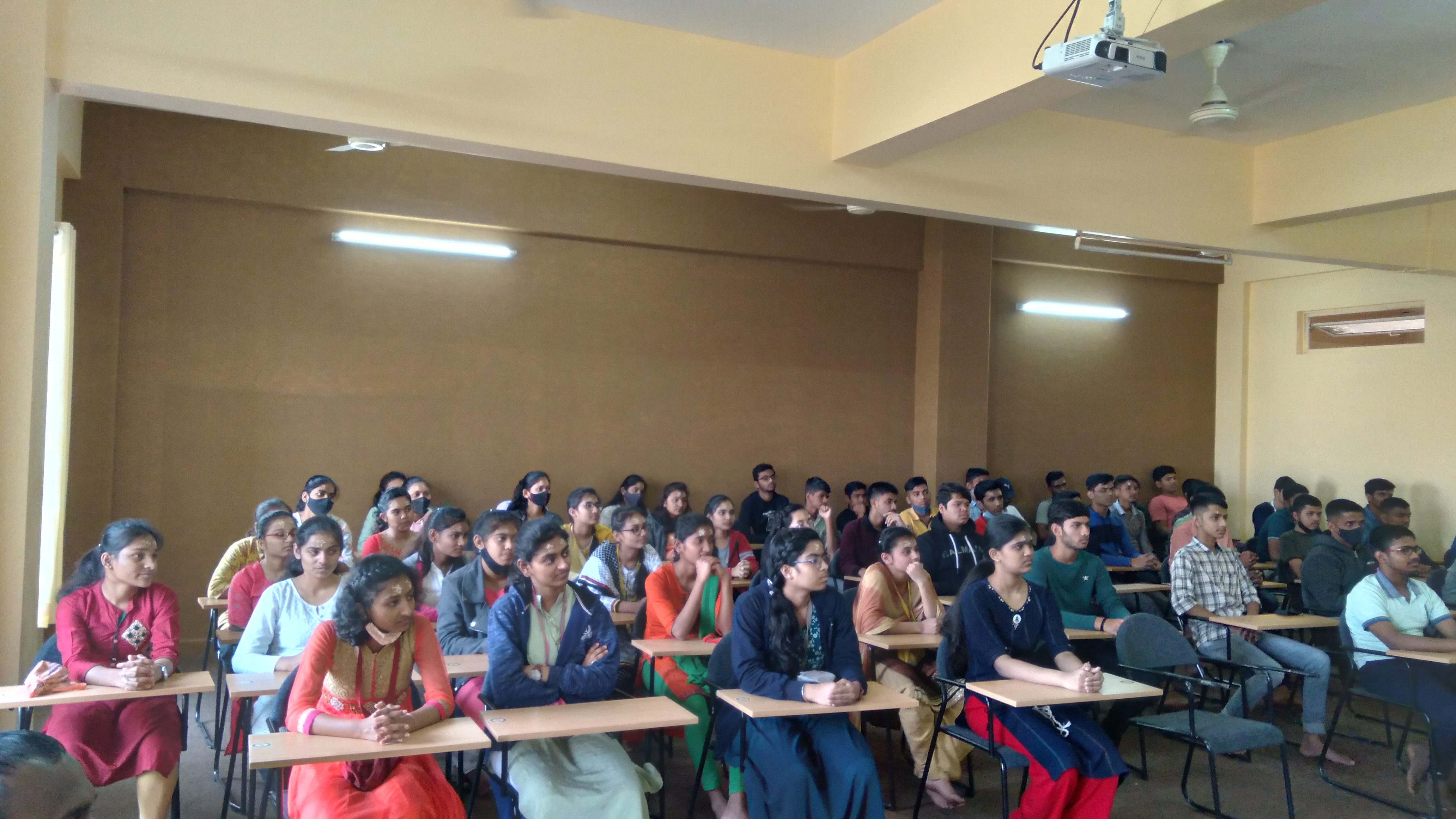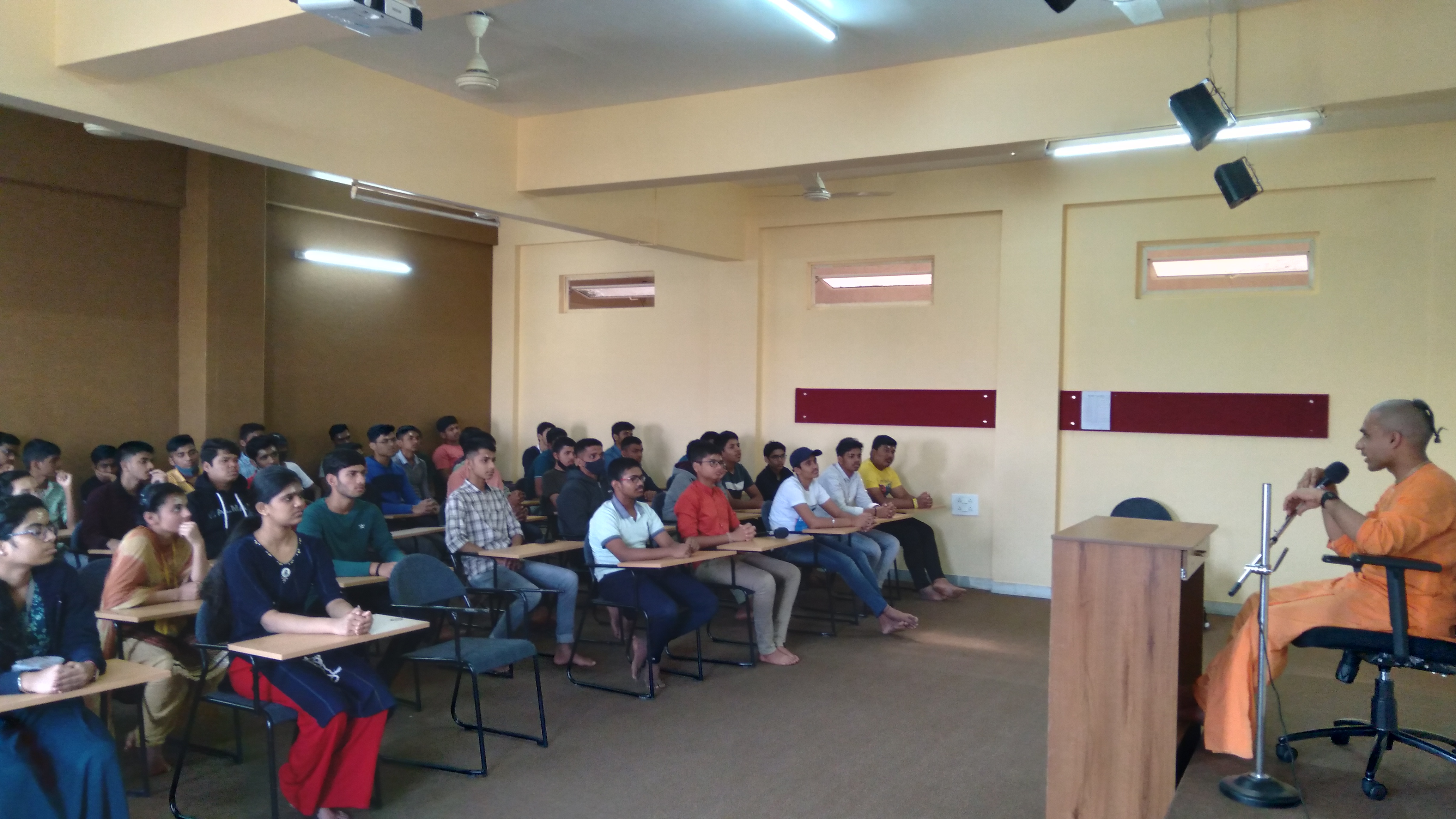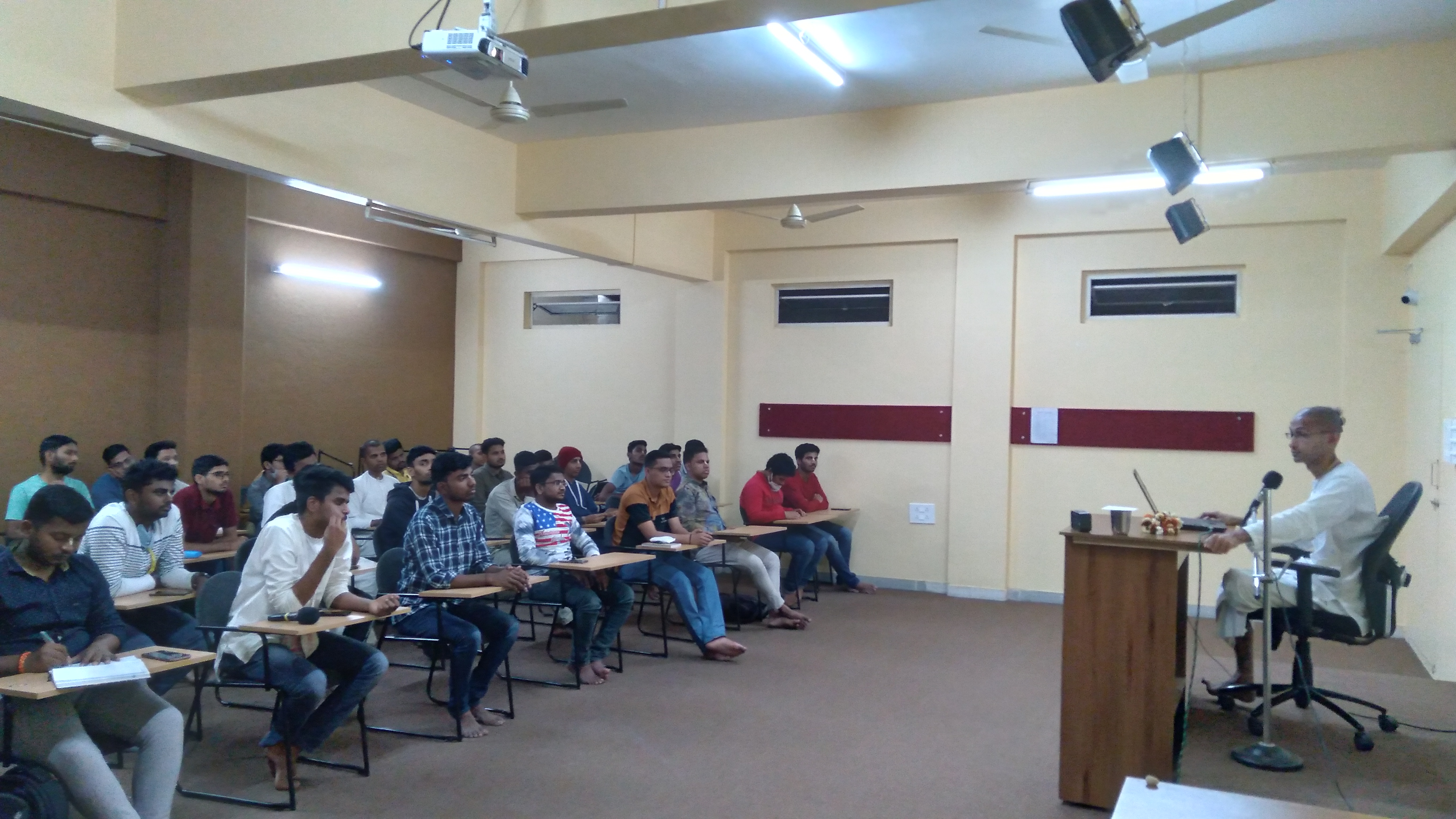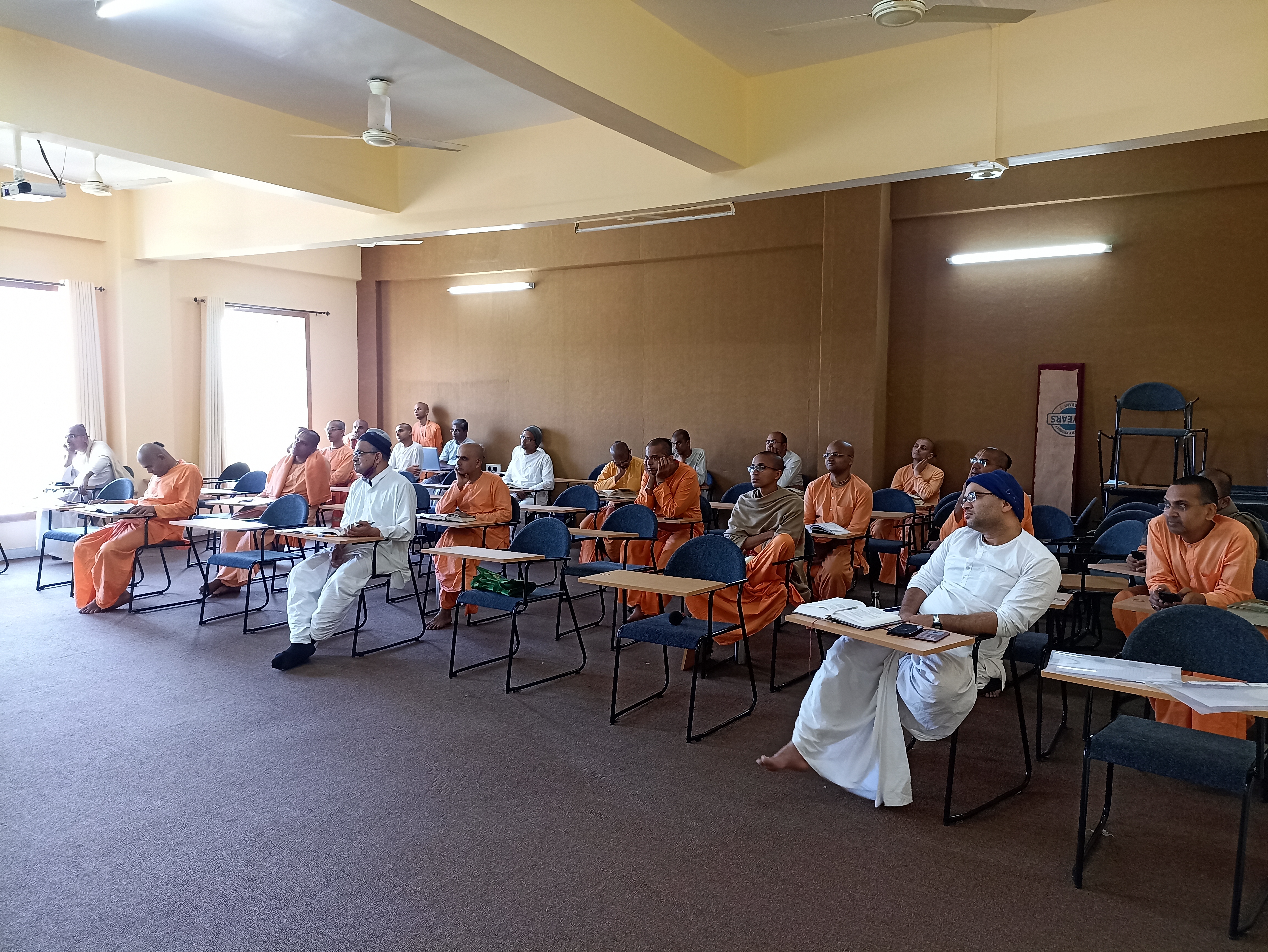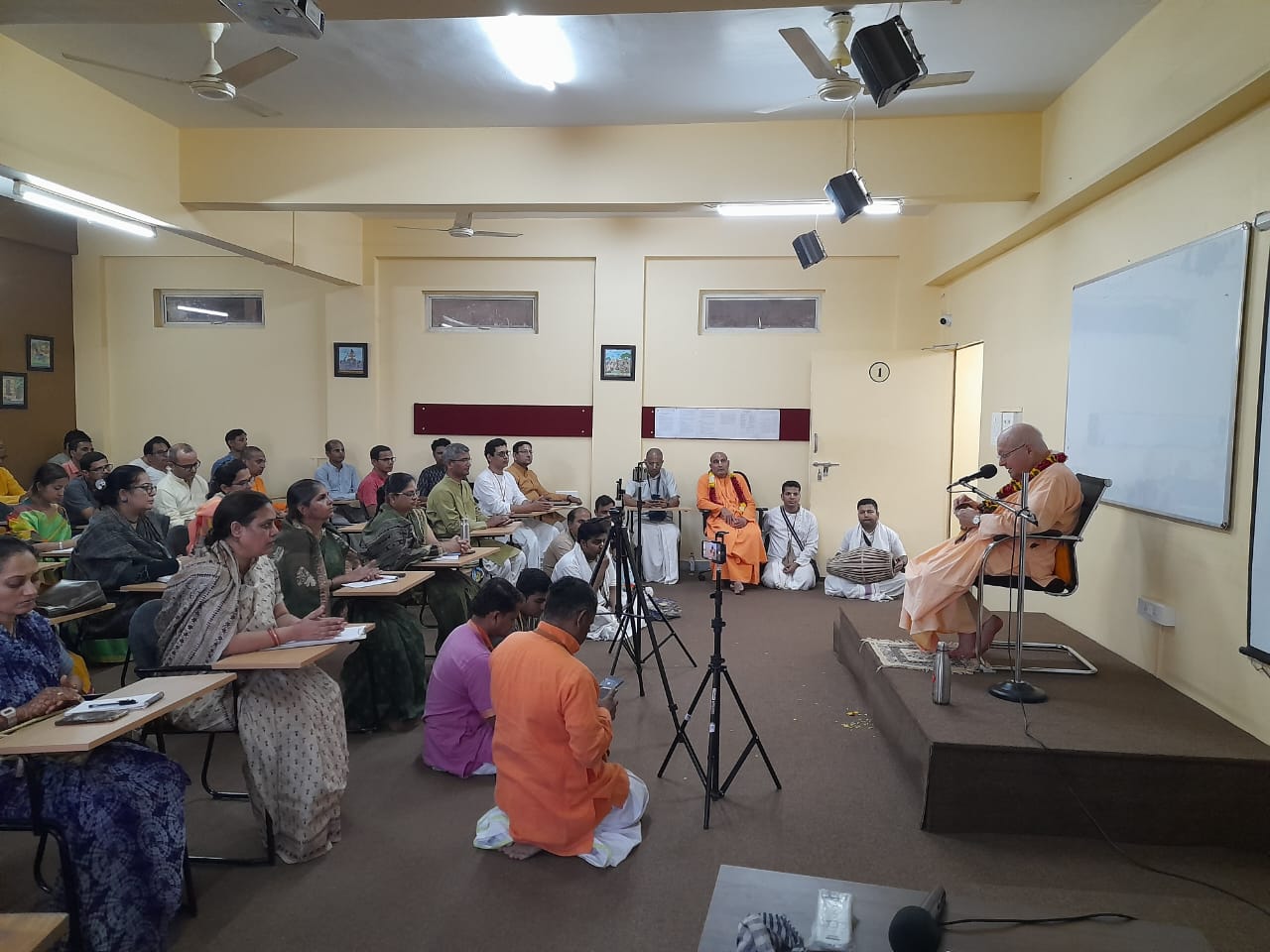


1. ISKCON
ISKCON belongs to the Gaudiya-Vaishnava sampradāya, a monotheistic tradition within the Vedic or Hindu culture. Philosophically it is based on the Sanskrit texts Bhagavad-gītā and the Bhagavata Purana, or Śrīmad-Bhāgavatam. These are the historic texts of the devotional bhakti-yoga tradition, which teaches that the ultimate goal for all living beings is to reawaken their love for God, or Lord Krishna, the “all-attractive one”.
God is known across the world by many names including Allah, Jehovah, Yahweh, Rama, etc. ISKCON devotees chant God’s names in the form of the maha-mantra, or the great prayer for deliverance:
The International Society for Krishna Consciousness (ISKCON), otherwise known as the Hare Krishna movement, includes five hundred major centers, temples and rural communities, nearly one hundred affiliated vegetarian restaurants, thousands of namahattas or local meeting groups, a wide variety of community projects, and millions of congregational members worldwide. Although less than fifty years on the global stage, ISKCON has expanded widely since its founding by His Divine Grace A. C. Bhaktivedanta Swami Prabhupāda in New York City in 1966.
Hare Krishna, Hare Krishna, Krishna Krishna, Hare Hare/Hare Rama Hare Rama, Rama Rama, Hare Hare.Many leading academics have highlighted ISKCON’s authenticity. Diana Eck, Professor of Comparative Religion and Indian Studies at Harvard University, describes the movement as “a tradition that commands a respected place in the religious life of humankind.” In the 1980s Dr. A. L. Basham, one of the world’s authorities on Indian history and culture, wrote of ISKCON that, “It arose out of next to nothing in less than twenty years and has become known all over the West. This, I feel, is a sign of the times and an important fact in the history of the Western world.”
ISKCON’s founder, SrilaPrabhupada, has drawn appreciation from scholars and religious leaders alike for his remarkable achievement in presenting India’s Vaishnava spiritual culture in a relevant manner to contemporary Western and worldwide audiences.Members of ISKCON practice bhakti-yoga in their homes and also worship in temples. They also promote bhakti-yoga, or Krishna Consciousness, through festivals, the performing arts, yoga seminars, public chanting, and the distribution of the society’s literature. ISKCON members have also opened hospitals, schools, colleges, eco-villages, free food distribution projects, and other institutions as a practical application of the path of devotional yoga.




2. SrilaPrabhupada:
Upon their first meeting in 1922, SrilaBhaktisiddhanta, who represented an ancient tradition of Bhakti-yoga, asked Abhay to propound the teachings to the English-speaking world. Deeply moved by SrilaBhaktisiddhanta’s devotion and wisdom, Abhay became his disciple and dedicated himself to carrying out his mentor’s request. But it wasn’t until 1965, at the age of seventy that he would set off on his mission to the West.AbhayCharan, now known as Bhaktivedanta Swami (an honorary title awarded by his peers), was given free passage aboard a cargo ship to New York. The journey proved to be treacherous, and he suffered two heart attacks while on the ship. After 35 days at sea he finally arrived at a lonely Brooklyn pier with just seven dollars in Indian rupees and one crate of his translations of sacred Sanskrit texts
He taught that each soul is part and parcel of the quality of God and that one could find true happiness through living a simpler, more natural way of life and dedicating one’s energy in the service of God and all living beings. Having begun initiating his New York followers into the Gaudiya Vaishnava lineage (the line of Bhakti-yoga stemming from the 16th century saint Sri Krishna Caitanya), Swamiji next travelled to San Francisco. Amidst the emerging hippie community in the Haight-Ashbury district, during 1967’s “Summer of Love,” he taught that the experience of devotion through Bhakti-yoga was a spiritual “high” superior to any pleasures derived from material sources such as wealth, fame, or intoxication. In the following months, many more people came forward to study under him and assist him.
His Divine Grace A.C. Bhaktivedanta Swami Prabhupada (1896-1977) is widely regarded as the world’s pre-eminent exponent of the teachings and tradition of Bhakti-yoga, the practice of loving devotion to God, to the Western world.
A.C. Bhaktivedanta Swami Prabhupada was born Abhay Charan De on September 1, 1896 in Calcutta, India. From birth, Abhay was raised in a family devoted to Krishna (whose name means the all-attractive, all-loving Lord). As a youth he became involved with Mahatma Gandhi’s civil disobedience movement. However, it was a meeting with a prominent scholar and spiritual leader, SrilaBhaktisiddhanta Sarasvati Prabhupada, which proved most influential on young Abhay’s future.
In New York he faced great hardships, and was regularly without money and a steady place to live. He began his mission humbly, giving classes on the Bhagavad-gita in lofts in the Bowery (New York’s infamous skid row), and leading kirtan (traditional devotional chants) in Tompkins Square Park. His message of peace and goodwill resonated strongly with the hippie community and younger generation, some of whom came forward to become serious students of the Bhakti-yoga (loving devotion to God) tradition. With the help of these followers, who affectionately began calling Bhaktivedanta Swami “Swamiji,” a small storefront was rented on New York’s Lower East Side to use as a temple. In July 1966, After almost a year of adversity and struggle, Swamiji established the International Society for Krishna Consciousness for the purpose of working for real unity and peace and reinstating proper values in the world.
Desiring to address him with the respect due to a revered spiritual teacher, his disciples began to call him SrilaPrabhupada, meaning “one at whose feet the masters sit”.In the eleven years that followed, SrilaPrabhupada circled the globe fourteen times, bringing the teachings of Bhakti-yoga to many thousands of people across all six continents. Men and women of all ages and backgrounds accepted his message and integrated the teachings into their lives. With his disciples’ help, SrilaPrabhupada established centers and projects throughout the world, including temples, rural communities, educational institutions, and what would become the world’s largest food relief program (which happens to be vegetarian). SrilaPrabhupada returned to India several times where he sparked a revival of the Bhakti-yoga tradition and opened many temples, including important centers in the holy towns of Vrindavana and Mayapur.SrilaPrabhupada’s most significant contribution, however, is his books.
He authored over seventy authentic volumes on Bhakti-yoga, which are highly respected for their authority, depth, clarity, and fidelity to tradition. His writings have been translated into seventy-six languages and are used as standard textbooks in most colleges around the world. His most prominent works include:Bhagavad-gita As It Is, the thirty-volume Srimad-Bhagavatam, and the seventeen-volume Sri Caitanya-caritamrita. To see the list of all books toggle “Books by SrilaPrabhupada”.A. C. Bhaktivedanta Swami Prabhupada left this world on November 14, 1977 in the holy town of Vrindavan.


3. BhaktivedantaRajavidyalaya:
BhaktivedantaRajavidyalaya, is a project of ISKCON NVCC Pune.It`s vision and activities are inspired by the teachings of His Divine Grace A. C. Bhaktivedanta Swami Prabhupada, the founder-acharya of the International Society for Krishna Consciousness. Our programs are based on systematic and scrutinizing study of SrilaPrabhupada books.
BhaktivedantaRajavidyalayaalso offers teacher training courses to train students to become effective teachers. The students are thus taught to apply Gaudiya Vaishnava teachings, educate others and become empowered emblems of the glorious heritage of our acharyas. Graduated students are equipped with leadership skills required to perpetuate our mission and thus reform the misguided and suffering society in which we now live.
People today are hankering for spiritual guidance. Modern society deserves spiritual leaders who are well trained and educated. BhaktivedantaRajavidyalayahumbly invites you to realize your full potential and become a beacon of enlightenment for the world. Welcome to BhaktivedantaRajavidyalaya !
3.1 OUR VISION:
BhaktivedantaRajavidyalayais imparting education and training in the theistic philosophy, practice and culture presented in the essential Vedic scriptures taught by Sri Chaitanya Mahaprabhu as translated and explained by SrilaPrabhupada.
The institute will also provide advanced study opportunities for understanding the writings of the predecessor acharyas, the primary books of the four Vaishnava sampradayas and important Vedic scriptures
3.2 OUR VALUES:
We strongly believe that the institute was setup, has been growing and will continue to grow in future by the mercy and blessings of Chaitanya Mahaprabhu and his successor acaryas in parampara. Our principal core value is faithfulness to SrilaPrabhupada books and teachings. Keeping in mind that the service of imparting sastric education is brahminical in nature, the institute does not charge any fees to students but recovers only service charges to barely cover all administrative office expenses such as photocopying, student handbooks, classroom rent and electricity, telephone bills, staff maintenance, etc. Also, many of our faculty members do not take any maintenance. BhaktivedantaRajavidyalayabelieves in and functions with full transparency in all its dealings with students, faculty, staff, donors and the management.
3.3 COMMITMENT:
We strongly believe that the institute was setup, has been growing and will continue to grow in future by the mercy and blessings of Chaitanya Mahaprabhu and his successor acaryas in parampara. Our principal core value is faithfulness to SrilaPrabhupada books and teachings. Keeping in mind that the service of imparting sastric education is brahminical in nature, the institute does not charge any fees to students but recovers only service charges to barely cover all administrative office expenses such as photocopying, student handbooks, classroom rent and electricity, telephone bills, staff maintenance, etc. Also, many of our faculty members do not take any maintenance. BhaktivedantaRajavidyalayabelieves in and functions with full transparency in all its dealings with students, faculty, staff, donors and the management.
3.4 OUR MISSION
To provide an opportunity to humanity to systematically study SrilaPrabhupada books.
To provide knowledge of GaudiyaVaisnava scriptures to students strictly and faithfully in accordance with the books and teachings of SrilaPrabhupada.
To build a pool of highly knowledgeable and qualified intellectuals on GaudiyaVaisnava philosophy and culture to preach to scientists, educators, engineers, technologists, researchers, etc.
To promote research in Gaudiyavaisnava philosophy & culture.
To enable students to get a better and deeper understanding of the GaudiyaVaisnava philosophy and sharpen their sastric knowledge and preaching skills.
To train devotees to take up responsibilities as teachers, preachers or leaders.
To help build and maintain students’ faith and conviction in the process of bhakti yoga and in the scriptures.
To equip students with the ability to see through the eyes of sastra. Ultimately, to help students to realize scripture and see Krsna at all times and in all places.
